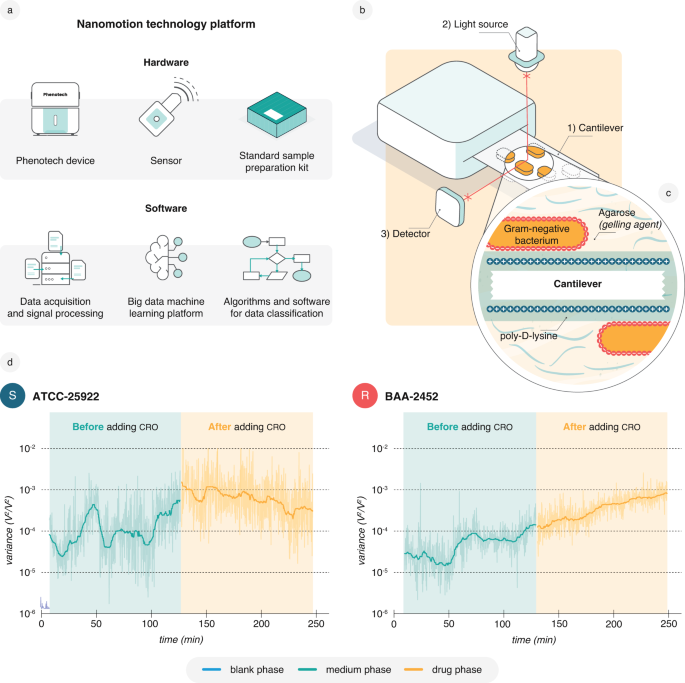Antimicrobial resistance (AMR) poses a significant global health threat by limiting treatment options for infected patients. Rapid and accurate antibiotic susceptibility testing (AST) is crucial for guiding appropriate antibiotic therapy and combating AMR. Traditional AST methods rely on assessing bacterial growth, which can be time-consuming and may delay effective treatment. To address this challenge, a novel growth-independent phenotypic AST utilizing nanomotion technology has been developed.
This study evaluates the performance of this innovative AST platform in accurately determining antibiotic susceptibility profiles of Escherichia coli and Klebsiella pneumoniae isolates.
Methods
The study utilized a nanomotion technology platform to measure bacterial vibrations as a proxy for antibiotic susceptibility. A dataset comprising 2762 individual nanomotion recordings from 1180 spiked positive blood culture samples was analyzed. Machine learning techniques were applied to train classification models using cephalosporins and fluoroquinolones as test antibiotics. The performance of the models was assessed using independent testing on 223 strains, including clinical isolates.
Key Scientific Findings
Development and Validation of Classification Models:
- Classification models achieved high accuracy rates ranging from 90.5% to 100% during training, demonstrating the efficacy of nanomotion technology for AST.
- Independent testing of the models on clinical isolates confirmed their generalizability, with accuracies ranging from 89.5% to 98.9%.
- The rapid processing of nanomotion signals and automated data analysis ensured standardized turnaround times (TTR) of only a few minutes, facilitating timely clinical decision-making.
3.2 Clinical Relevance and Implications:
- The study highlights the potential of nanomotion-based AST to provide rapid and accurate antibiotic susceptibility information, reducing the time of empirical drug administration and promoting early switch to informed treatment decisions.
- Parallelization of measurement is essential to address hospital sampling frequency requirements and enable simultaneous testing of multiple antibiotics, particularly for patients with allergies or documented resistance to first-line treatments.
- While the study focused on cephalosporins and fluoroquinolones, nanomotion technology holds promise for assessing antibiotic susceptibility in slow-growing bacteria and non-growing phenotypes, as well as for evaluating drug effects on other microbial and cancer cells.
Future Directions and Applications:
- The development of a comprehensive nanomotion database linking specific nanomotion signatures to resistance mechanisms could enhance understanding of bacterial resistance diversity and facilitate tailored treatment approaches.
- Nanomotion-based technology platforms offer potential applications beyond bacterial AST, including susceptibility testing for other pathogens, assessment of phage susceptibility, and evaluation of drug effects on fungal and cancer cells.
This study demonstrates the feasibility and accuracy of nanomotion-based AST for rapid antibiotic susceptibility testing. The platform’s growth-independent approach and rapid TTR make it a promising tool for combating AMR and guiding antibiotic therapy in clinical settings. Further research and development are warranted to expand the applications of nanomotion technology and optimize its utility in diverse healthcare contexts.
Link to the study : https://tinyurl.com/2wzsb8je
